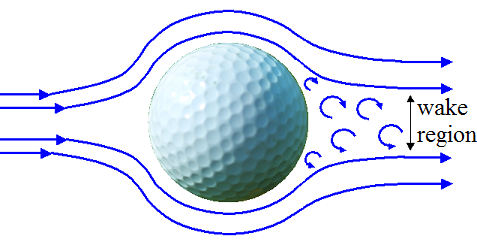One may wonder how a small golf ball can travel at incredibly high speeds for such long distances. While the swing of the club is a major component, the structure of the golf ball is quite important. Unlike a baseball or tennis ball, a golf ball has dimples all over it (usually 336 dimples). These dimples allow the golf ball to travel without facing much air resistance. This diagram shows how air travels around the golf ball.

The dimples on the golf ball also prevent drag that would occur in the wake region, resulting in further distance. Also due to the contact with the club during the swing, the golf ball has backspin during its entire flight. This diagram shows the motion of the golf ball mid flight with the lift force of F.

There are hundreds of different types of golf balls that a player can choose. Some show little affect to a player's game while others can alter their performance completely. Personally, I prefer Callaway Supersoft golf balls, but it is entirely based of of the player's preference.


The dimples on the golf ball also prevent drag that would occur in the wake region, resulting in further distance. Also due to the contact with the club during the swing, the golf ball has backspin during its entire flight. This diagram shows the motion of the golf ball mid flight with the lift force of F.

There are hundreds of different types of golf balls that a player can choose. Some show little affect to a player's game while others can alter their performance completely. Personally, I prefer Callaway Supersoft golf balls, but it is entirely based of of the player's preference.
Comments
Post a Comment